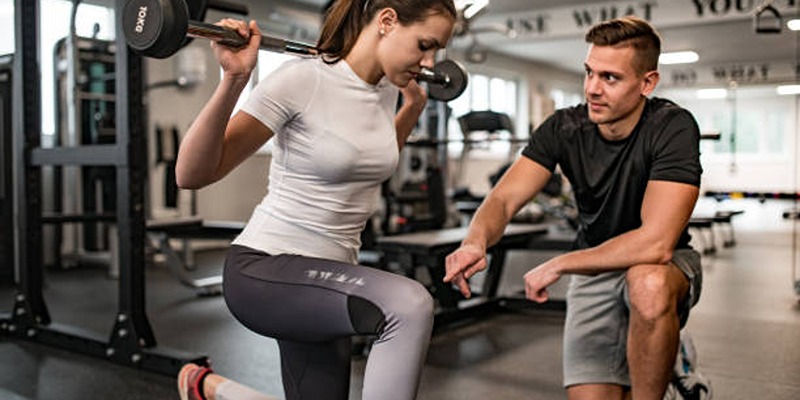Regular exercise has marked advantages to the body and mind, although it sometimes leads to side effects including muscle soreness, tiredness, and dehydration. Information about the most widespread problems and efficient control strategies ensure a safe and comfortable workout process to stimulate desire and maximize your achievement in terms of healthcare accomplishments.
1. Muscle Soreness: Understanding and Managing the Discomfort

Majority of people tend to experience muscle soreness, DOMS, which is translated into discomfort or stiffness. Its symptoms typically occur during 12 – 48 hours after exercising; it is most common when you are switching to a new fitness procedure, increasing the level of exercising, or compelling your muscles to adjust to something new. Large-scale rupture of muscle occurring during exercise triggers inflammation because the body initiates the healing process of damaged tissue. Underneath the unpleasantries, experiencing DOMS is a sign that your body is reacting to novel challenges, and is working to increase its strength.
What Causes It?
- Microscopic tears in muscle fibers from exertion
- The body’s inflammatory response during muscle repair
How to Relieve It:
- Active Recovery: Gentle activities like walking, yoga, or light stretching boost circulation and ease discomfort.
- Stay Hydrated: Proper hydration helps flush out waste products from muscle breakdown, aiding recovery.
- Fuel Your Body: A diet rich in protein and antioxidants supports muscle repair and reduces inflammation.
- Foam Rolling: Self-massage with a foam roller can alleviate tightness and speed up the healing process.
2. Fatigue: When Energy Levels Plummet
Post-workout fatigue often manifests as physical exhaustion, mental fog, or a lack of motivation. It’s typically caused by overtraining or inadequate recovery.
Common Causes:
- Insufficient sleep
- Overexertion during workouts
- Poor nutrition before or after exercise
How to Combat It:
- Schedule Rest Days: Give your body the time it needs to recover and repair by incorporating rest days into your routine.
- Prioritize Quality Sleep: Aim for 7–9 hours of consistent, restorative sleep each night.
- Fuel Up Smartly: Eat a light pre-workout meal rich in complex carbs and lean protein for sustained energy.
- Pay Attention to Your Body: If you’re feeling unusually drained, don’t hesitate to reduce workout intensity or take an extra day off.
3. Dehydration: The Hidden Barrier to Peak Performance
Even mild dehydration can take a toll on your body, causing headaches, dizziness, and muscle cramps that can significantly hinder your workout's effectiveness.
Common Causes:
- Excessive sweating without proper fluid replacement
- Not staying adequately hydrated throughout the day
How to Prevent It:
- Before Exercise: Hydrate 30–60 minutes prior to your workout to prepare your body.
- During Exercise: Stay hydrated by sipping water consistently, especially in hot or humid conditions.
- After Exercise: Replenish lost fluids with water or an electrolyte-rich beverage, particularly after intense sessions.
4. Dizziness or Lightheadedness
Feeling dizzy or faint during or after a workout is often caused by a sudden drop in blood pressure or blood sugar levels.
Common Causes:
- Exercising on an empty stomach
- Standing up too quickly after sitting or lying down
- Dehydration or overheating
How to Prevent It:
- Eat Before You Exercise: Have a light snack 30–60 minutes before your workout to maintain stable energy levels.
- Cool Down Gradually: Ease your heart rate down with gentle movements instead of stopping abruptly.
- Stay Hydrated and Cool: Drink water regularly, choose well-ventilated spaces, and wear breathable clothing.
- Pace Yourself: Avoid overexertion to prevent sudden drops in blood pressure.
5. Muscle Cramps: Sudden Tightness and Pain
Muscle cramps are sudden, involuntary contractions that can interrupt your workout or strike afterward, leaving you in discomfort.
Common Causes:
- Electrolyte imbalances
- Dehydration
- Overuse or prolonged muscle exertion
How to Manage and Prevent Cramps:
- Stretch and Massage: Gently stretch the cramped muscle or massage it to release the tension.
- Balance Electrolytes: Incorporate potassium, calcium, and magnesium into your diet through fruits, vegetables, and dairy products.
- Warm Up and Cool Down: Properly prepare your muscles before exercising and cool down afterward to reduce the risk of cramping.
6. Joint Discomfort: More Than Just Muscle Fatigue
While occasional mild joint aches are normal, persistent or sharp pain may signal issues with your technique or workout routine.
Common Causes:
- Poor exercise form
- Lack of proper joint support
- Overtraining without adequate rest
How to Address It:
- Prioritize Proper Form: Maintain correct posture and movement mechanics. When in doubt, consult a fitness professional for guidance.
- Invest in Supportive Footwear: Shoes with proper cushioning and alignment can significantly reduce joint strain.
- Strengthen Surrounding Muscles: Building the muscles around your joints helps improve stability and function.
- Incorporate Rest Periods: Prevent repetitive strain by alternating muscle groups and allowing time for recovery between sessions.
7. Shortness of Breath: Finding Your Rhythm
While mild breathlessness during intense exercise is normal, experiencing frequent shortness of breath during low-intensity activities could indicate poor cardiovascular fitness or ineffective breathing techniques.
Common Causes:
- Shallow breathing habits
- Limited aerobic endurance
- Jumping into high-intensity workouts without proper adaptation
How to Address It:
- Start Slow: Gradually increase your workout intensity and duration to allow your body to adapt.
- Master Your Breathing: Focus on diaphragmatic breathing (deep belly breaths) to enhance oxygen intake and efficiency.
- Try Interval Training: Alternate between high- and low-intensity exercises to build lung capacity and improve endurance over time.
8. Skin Irritation and Chafing
Skin irritation, rashes, or redness often occur in high-friction areas, typically caused by sweating and repetitive movements.
Common Causes:
- Wearing tight, rough, or ill-fitting clothing
- Excess sweat combined with friction
- Poor fabric choices that trap moisture
How to Prevent and Manage:
- Opt for Moisture-Wicking Fabrics: Choose breathable, seamless clothing designed to reduce friction and keep skin dry.
- Apply Barrier Creams: Use anti-chafing balms or powders to protect areas prone to irritation.
- Shower Immediately Post-Workout: Cleansing your skin promptly helps reduce the risk of breakouts or further irritation.
9. Headaches After a Workout
Post-workout headaches can range from a mild ache to intense throbbing pain, often triggered by physical exertion or dehydration.
Common Causes:
- Inadequate hydration
- Poor posture during exercise
- Jaw clenching or neck strain
How to Prevent and Manage:
- Stay Hydrated: Drink plenty of water before, during, and after your workout to prevent dehydration.
- Maintain Good Posture: Keep your shoulders relaxed and your neck properly aligned to avoid unnecessary tension.
- Fuel Your Body: Eat a balanced meal or snack before and after exercising to prevent low blood sugar.
10. Appetite Changes: Increased Hunger or Loss of Appetite

Exercise can impact your appetite in different ways. For some, it temporarily suppresses hunger, while for others, it may trigger increased food cravings—both outcomes often depend on the workout’s intensity and individual metabolism.
Why It Happens:
- Hormonal fluctuations
- Type and intensity of exercise
- Timing of meals relative to your workout
How to Manage It:
- Identify Patterns: Pay attention to how different workouts affect your hunger levels.
- Prioritize Meals: Fuel your body before and after exercise to avoid overeating later.
- Choose Nutrient-Rich Foods: Opt for balanced meals that include protein, healthy fats, and fiber to sustain energy and curb cravings.
Conclusion:
Exercise is one of the most effective ways to enhance your health, boost your mood, and increase longevity. While occasional discomforts may occur, most workout-related side effects can be managed with a proactive approach. Prioritizing hydration, proper nutrition, adequate rest, and correct technique will help you stay on track and avoid unnecessary setbacks. Instead of viewing these side effects as obstacles, see them as valuable signals from your body—opportunities to fine-tune and improve your routine.












